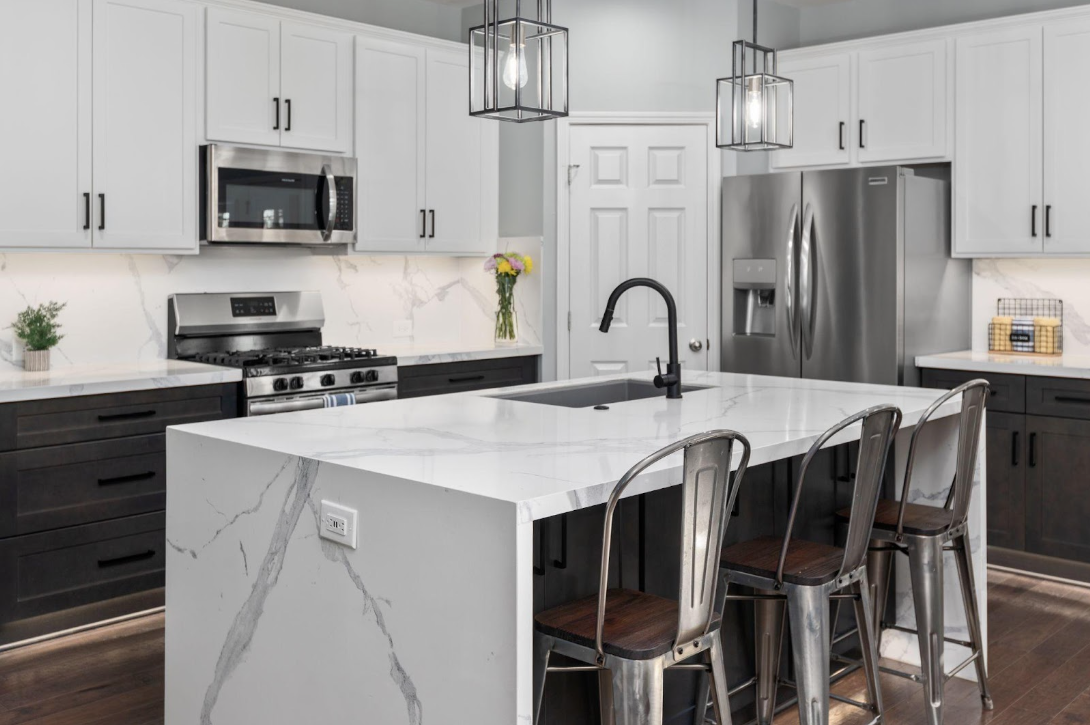You need approximately 10-12 kitchen cabinets for a standard-sized kitchen. High-quality cabinets can improve functionality and aesthetic appeal in your kitchen.
When designing your kitchen, the number of cabinets you need plays a crucial role. The right amount of cabinets can enhance storage space, organization, and overall efficiency in your kitchen. Additionally, choosing the right style and design will also elevate the visual appeal of your space.
With a well-thought-out plan, you can create a functional and aesthetically pleasing kitchen that meets your needs and reflects your personal style.
Assessing Your Needs
Determining Your Storage Requirements
Consider how much kitchenware and appliances you own.
Factor in your family size and lifestyle to assess needs accurately.
Considering Your Cooking Habits
- Evaluate how often you cook meals at home.
- Assess the types of cookware and utensils you use frequently.
- Determine if you require specialized storage for any kitchen items.
Understanding your unique cooking style will guide cabinet quantity.

Credit: all-nuconstruction.com
Designing Your Kitchen Layout
Designing Your Kitchen Layout:
Measuring Your Kitchen Space
Begin by measuring your kitchen area for accurate cabinet placement.
Deciding On Cabinet Placement
- Determine which areas need cabinets based on the kitchen’s functionality.
- Optimize storage by placing cabinets in convenient and accessible locations.
Utilizing Space Efficiently
- Maximize vertical space with taller cabinets to store items efficiently.
- Consider corner cabinets to utilize often overlooked areas effectively.
Keep in mind the traffic flow and ensure seamless movement in the kitchen.
Understanding Different Cabinet Types
When designing or renovating a kitchen, one important consideration is the number of kitchen cabinets you will need. Different kitchen cabinet types serve different purposes and provide various storage options. Understanding the different cabinet types available can help you make an informed decision and optimize your kitchen layout.
Exploring Base Cabinets
Base cabinets are an essential component of any kitchen. They are typically installed at the floor level and provide a sturdy foundation for your countertops. Base cabinets come in various sizes and configurations, allowing you to customize your storage space according to your needs.
These cabinets are designed to store heavy or bulky items and offer ample space for pots, pans, and other kitchen essentials. Some popular types of base cabinets include:
- Drawer Base Cabinets
- Sink Base Cabinets
- Corner Base Cabinets
Drawer base cabinets are perfect for storing utensils, cutlery, and smaller kitchen gadgets. With multiple drawers of varying sizes, they make it easy to organize and access your kitchen tools effectively.
Sink base cabinets, as the name suggests, are specifically designed to accommodate your kitchen sink. These cabinets usually have a false drawer front on the top to match the appearance of other cabinets but offer ample space underneath for plumbing and storage.
Corner base cabinets are an excellent option for utilizing corner spaces efficiently. They typically have a rotating lazy susan mechanism that allows for easy access to items stored in the back corner.
Exploring Wall Cabinets
While base cabinets provide storage below the countertop, wall cabinets maximize vertical space and offer additional storage above. Wall cabinets are usually mounted on the wall, providing a convenient and accessible solution for storing your kitchen essentials.
Here are some common types of wall cabinets:
- Standard Wall Cabinets
- Corner Wall Cabinets
- Open Shelving
Standard wall cabinets are the most common type and come in various sizes. They are typically installed above the cooking or prep area and provide storage for dishes, glassware, and other frequently used items.
Corner wall cabinets are designed with a diagonal shape, making the most of often-neglected corner spaces. These cabinets provide extra storage while allowing easy access to your kitchen tools.
If you prefer a more open and decorative option, open shelving is an excellent choice. It can add a touch of uniqueness to your kitchen while providing a convenient display area for your dishes, cookbooks, or decorative items.
:max_bytes(150000):strip_icc()/more-storage-and-counter-space-in-a-small-kitchen-3017406-77e6037bb6854661bf221e3a5afb320d.jpg)
Credit: www.thespruce.com
Maximizing Storage Potential
Utilizing Corner Cabinets
Corner cabinets often present a storage challenge, but utilizing this space effectively can significantly increase your kitchen’s storage capacity. Installing corner cabinet organizers, such as lazy susans or pull-out shelves, can make items more accessible while maximizing the space. Consider opting for deep corner drawers to fully utilize the awkward corner space and make the most of every inch.
Adding Extra Shelves
Creating additional storage space through the addition of extra shelves can be a game-changer for your kitchen organization. By installing adjustable shelves, you can customize the cabinet interiors to accommodate items of varying sizes, making the most of vertical space. Whether it’s for your pantry or upper cabinets, adding a couple of extra shelves can significantly expand your storage capacity without undertaking a major renovation.
Choosing Cabinet Features
When considering how many kitchen cabinets you need, it’s essential to focus on choosing the right features to ensure maximum functionality and organization in your kitchen space.
Opting For Drawers Or Shelves
When designing your kitchen cabinets, deciding between drawers and shelves significantly impacts the storage and accessibility of your belongings.
Considering Pull-out Features
Incorporating pull-out features such as spice racks, trash bins, and utensil organizers can optimize the space within your cabinets and provide easy access to frequently used items.
Determining Cabinet Quantity
Determining the right number of kitchen cabinets depends on factors like your storage needs and layout. Consider cabinet sizes, types, and space utilization for functionality and aesthetics. Personal preference and budget can also influence the quantity of cabinets required to design your ideal kitchen space.
Calculating Your Storage Needs
Determining the right quantity of kitchen cabinets is crucial to maximize the functionality and storage capacity of your kitchen. To calculate your storage needs accurately, start by taking an inventory of all your kitchen items. This includes dishes, cookware, gadgets, and even small appliances. Sorting your items into categories will help you identify the specific storage requirements for each.
Considering Kitchen Size And Layout
The size and layout of your kitchen are essential factors to consider when determining the number of kitchen cabinets you need. A small kitchen will generally have limited space for cabinets, so it’s crucial to prioritize your storage needs. On the other hand, a larger kitchen provides more flexibility in cabinet quantity.
One effective strategy is to strategically place floor-to-ceiling cabinets, utilizing vertical space for maximum storage. Additionally, consider installing corner cabinets, which are excellent for utilizing otherwise wasted space. By carefully considering your kitchen’s size and layout, you can optimize the use of space and ensure every inch counts.
Utilizing Cabinetry Features
When it comes to kitchen cabinets, it’s not just about the quantity but also the features they offer. Consider the different cabinet options available, such as pull-out shelves, deep drawers, and specialized storage solutions for items like spices and utensils. These features can significantly increase storage efficiency and make it easier to access your kitchen items.
By investing in cabinets with clever storage solutions, you can maximize your storage capacity without compromising on organization and accessibility. Remember to consider your cooking habits and personal preferences when choosing the features that best suit your needs.
Seeking Professional Guidance
If you find yourself struggling to determine the right number of kitchen cabinets for your space, seeking professional guidance can be immensely helpful. An experienced kitchen designer or cabinet expert can assess your storage needs and recommend the most appropriate cabinet quantity and layout for your kitchen.
Their expertise can make a significant difference in ensuring you achieve an optimized kitchen design that perfectly balances form and function. So, don’t hesitate to consult professionals who can guide you towards the ideal amount and configuration of kitchen cabinets for your specific requirements.
Tips For Space Optimization
Maximizing available space in your kitchen is crucial for efficient organization. Here are some tips to help you optimize your kitchen cabinets:
Using Vertical Space
- Install tall cabinets to utilize vertical space efficiently.
- Consider open shelving to store items that don’t need to be concealed.
Organizing With Cabinet Accessories
- Use pull-out racks for easy access to pots, pans, and pantry items.
- Install lazy Susans to maximize corner cabinet storage.
How Do I Determine The Number Of Kitchen Cabinets I Need?
To determine the number of kitchen cabinets needed, consider your storage needs, kitchen layout, and available space. Evaluate your cooking and baking equipment, pantry items, and cutlery to determine the required cabinet space. Factor in any future kitchen upgrades as well.
What Are The Standard Kitchen Cabinet Sizes?
Standard kitchen cabinet sizes typically range from 9 to 48 inches in width and 30 to 36 inches in height. Wall cabinets are usually 12 to 18 inches deep, while base cabinets are 24 inches deep. Understanding these sizes can help in planning your kitchen layout.
How Can I Optimize Kitchen Cabinet Storage Space?
To maximize storage in your kitchen cabinets, utilize vertical space by adding stacking shelves or drawers. Consider installing pull-out racks and organizers for easy access. Utilize cabinet doors for added storage with hooks or racks. Additionally, declutter and organize items to efficiently use the available space.
Conclusion
To determine the number of kitchen cabinets you need, it’s crucial to consider your storage requirements, available space, and personal preferences. By optimizing your kitchen layout and making smart storage choices, you can maximize functionality and create an organized space.
Remember, each kitchen is unique, so take into account your lifestyle and cooking habits when deciding the number of cabinets. Ultimately, a well-designed kitchen with an appropriate number of cabinets will enhance both functionality and aesthetics, making daily tasks more efficient and enjoyable.

Sohel Rana is a seasoned author whose passion for home and kitchen essentials permeates through his writing. Born and raised in a small town nestled amidst lush greenery, Rana’s fascination with the intricacies of domestic life blossomed from an early age. His upbringing in a close-knit family environment instilled in him a deep appreciation for the importance of a well-equipped kitchen and a cozy home

